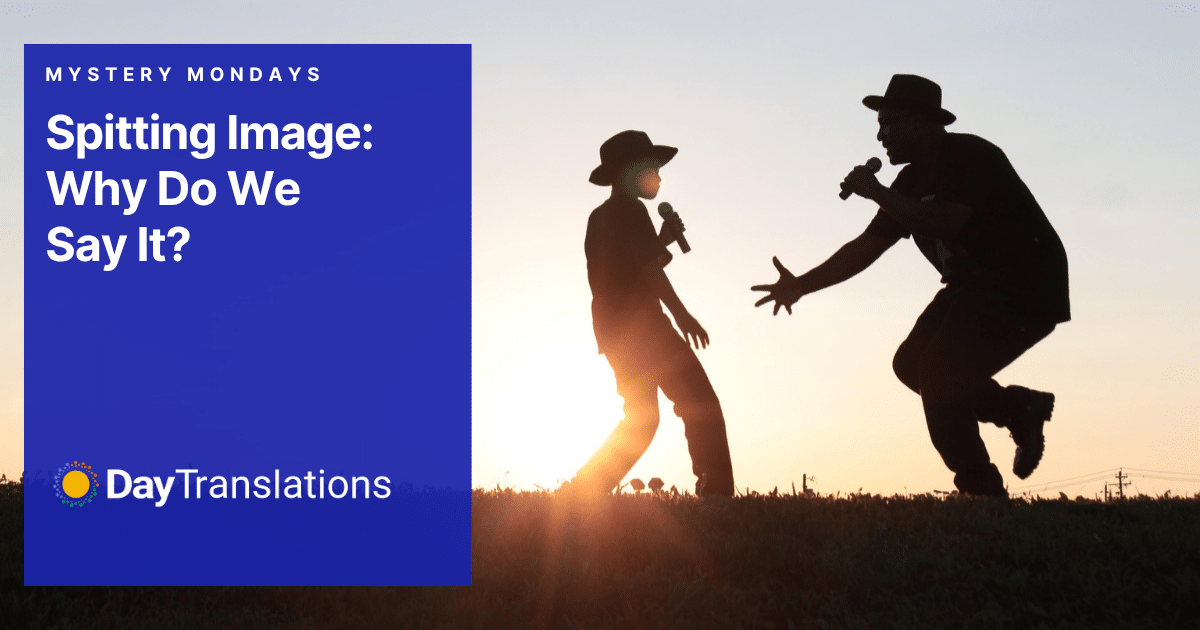Ever looked at someone and said, “Wow, you’re the spitting image of your mother!”?
It rolls off the tongue. But stop and think, spitting image? That sounds weird. Gross, even. Why spit? Where does it come from? And what does spit have to do with resemblance?
This week on Mystery Mondays, we dive into the slippery history of one of English’s strangest idioms.
Not About Actual Spit (Probably)
Let’s clear the air: no one is literally spitting here.
The modern phrase spitting image means someone looks exactly like another person, usually a parent or ancestor. But its origins have been long debated, with theories that span centuries and cultures.
Here are the top contenders:
1. “Spirit and Image” Theory
Some linguists believe the phrase started as “spirit and image”, meaning someone who not only looked like someone else but shared their essence or soul.
Over time, spirit and image may have been compressed into spitten image and eventually morphed into spitting image thanks to accents and sloppy pronunciation.
This idea was popular in the 19th century, especially in American English.
2. “Spitten” as in Past Participle of Spit
Another theory is that spitting image evolved from spitten image, “spitten” being an old dialect version of spat or spit. In other words, the person was “spat out” of the original person, like a clone.
Kind of like saying, “You were spit right out of your dad’s mouth.”
Charming, right?
This version sticks around because it aligns with similar expressions in other languages. In French, for example, there’s c’est son portrait tout craché, literally, “he’s his portrait all spat out.”
3. Just Good Old Evolution of Language
Sometimes, idioms don’t follow logic. They just sound right, and over time, nonsense becomes normal.
By the early 1900s, spitting image was the dominant version in both British and American English. Newspapers used it, books printed it, and people stopped asking why.
Pop Culture & Puppets: The Phrase Lives On
You might also remember Spitting Image as the name of a satirical British TV show from the 1980s, famous for using grotesque puppets to mock politicians. The name was a play on the idea that the puppets were exaggerated, yet recognizable “images” of real people.
This cemented the phrase in public memory, and gave it an extra wink of irony.
Final Thoughts: What We Say vs What We Mean
What makes spitting image so delightful is that it doesn’t make any sense… and yet, we all know exactly what it means.
That’s the magic of language. Phrases like these have become part of our identities, and it is something we carry over from one generation to the next.
Sometimes, a phrase gets passed down through centuries of mumbling, mishearing, and metaphor—and becomes an idiom that perfectly captures what we’re trying to say.
Even if it involves a little spit.











